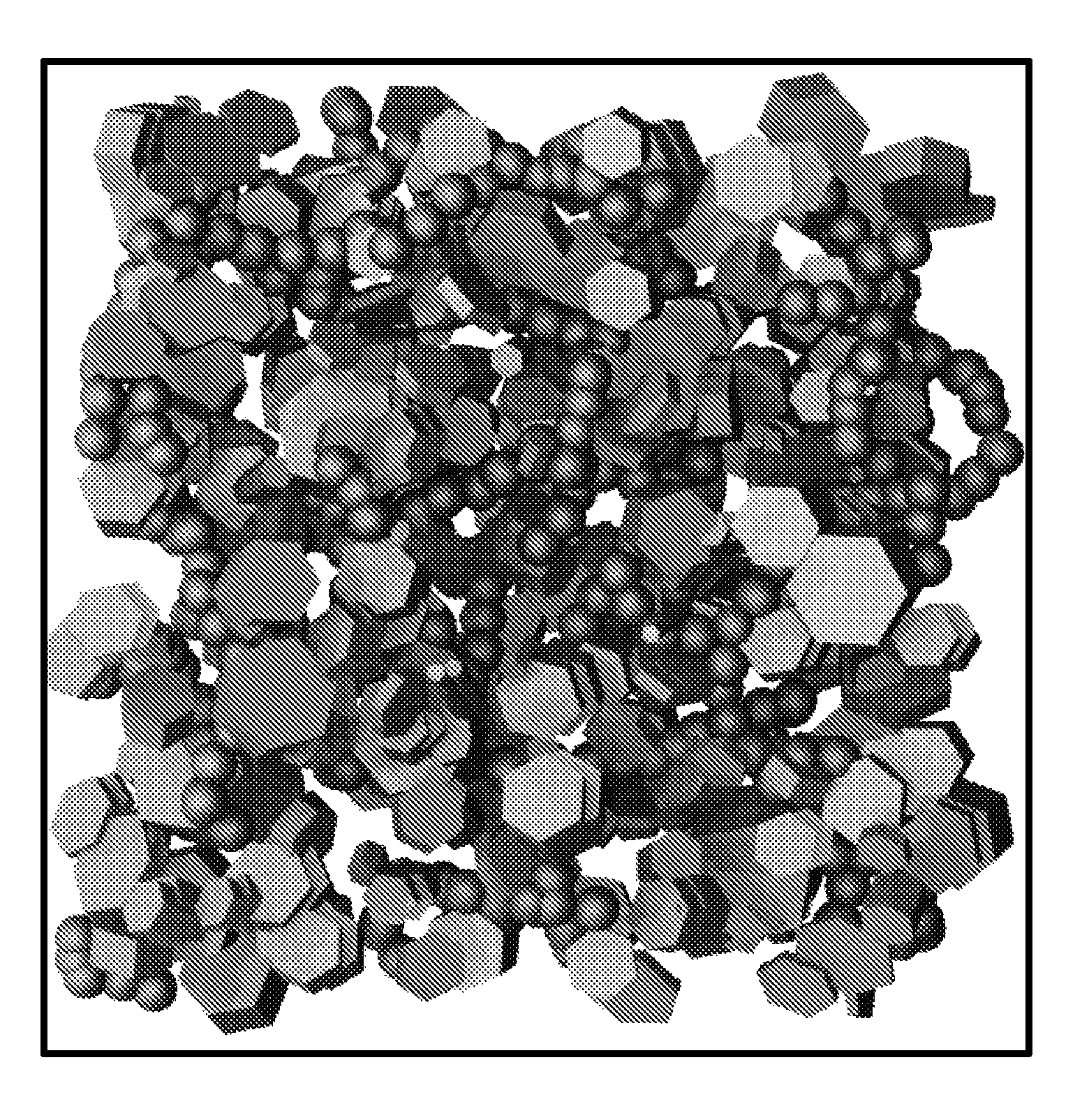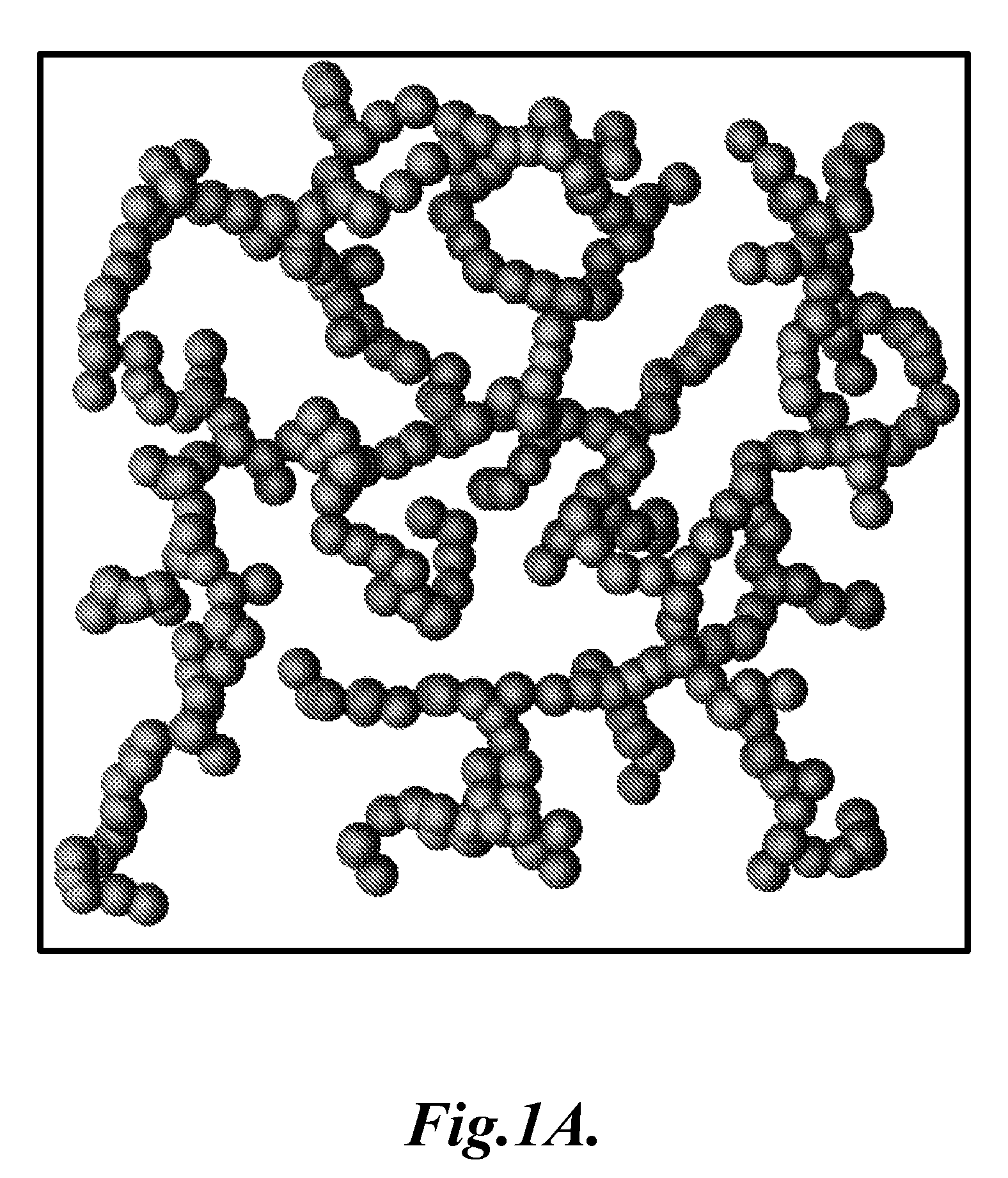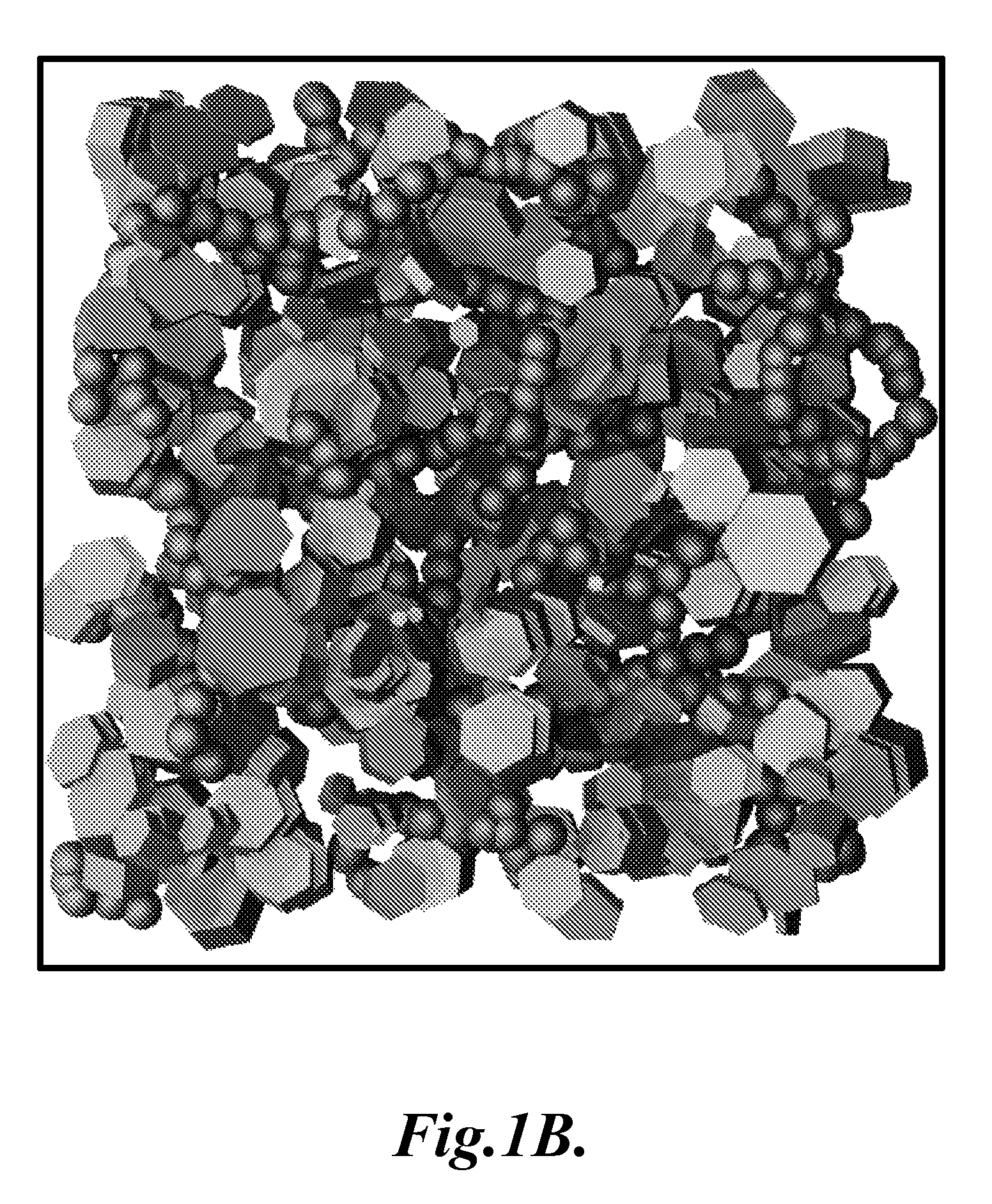Carbon-based foam nanocomposite hydrogen storage material
a hydrogen storage material and carbon-based foam technology, applied in cell components, other chemical processes, separation processes, etc., can solve the problems of inability to achieve the reaction kinetics, inability to achieve good reversibility, and inability to meet the requirements of automotive and other small-scale industrial or residential applications, so as to reduce the temperature required for hydrogen release, increase the amount of hydrogen released from the composite, and control the rate of hydrogen release
- Summary
- Abstract
- Description
- Claims
- Application Information
AI Technical Summary
Benefits of technology
Problems solved by technology
Method used
Image
Examples
example 1
The Preparation of a Representative Magnesium Hydride Carbon Cryogel Composite
[0086]The chemicals utilized in this example are as follows: resorcinol {99+%, Sigma-Aldrich, C6H4(OH)2}, formaldehyde solution {37%—stabilized with methanol (C2H5OH), Fisher Scientific, COH2}, sodium carbonate {99.5%, Sigma-Aldrich, NaCO3}, trifluoroacetic acid {99%, Aldrich, C2HF3O2}, tert-butyl-alcohol (t-butanol) {99.8%, J. T. Baker, (CH3)3COH}, and magnesium hydride {MgH2}. These were used as received without further treatment. Carbon cryogels with resorcinol:catalyst ratio (R / C) held at 50:1 or 200:1, the weight percent solids at 5% (R / W) were fabricated using the method described in Pekala, R W., Journal of Materials Science 24(9):3221-7, 1989, as modified by the method described in Tamon, H., Ishizaka, H., Yamamoto, T., Suzuki T., 379(12): 2049-55, 1999. The molar ratio of resorcinol to formaldehyde was maintained at 1:2 for all sols. The sols were prepared by admixing resorcinol and formaldehyde i...
example 2
The Preparation of a Representative Ammonia Borane Carbon Cryogel Composite
[0090]Ammonia borane (AB) AB was added to THF until saturation and then loaded into a carbon cryogel to achieve a 37% by weight AB composite material. AB shows a significant reduction in decomposition temperature. FIG. 9 shows the decomposition peak for bulk AB at about 100° C. While the AB carbon cryogel composite demonstrates the same peak hydrogen release temperature, the hydrogen release begins at a much lower temperature of 50° C., indicating a significant change in the reaction. This is supported by FIG. 10 which shows a change in the thermodynamics as demonstrated by differential scanning calorimetry (DSC) (heating rate of 1° C. / min). FIG. 10 shows an endothermic reaction starting at the same temperature that hydrogen release begins. FIG. 11 also shows a change in the reaction byproducts. AB when dehydrogenated in bulk will release large quantities of borazine. This is not the case for the AB carbon cr...
example 3
Metal Catalyst Addition to Carbon-Based Foams
[0091]Carbon-based foams are doped with transition metal catalysts including Ni, Ce, and Zr catalysts. Two sets of sols with R / C:50 and R / C:300 were made and then further separated into four, to which nickel acetate and Ce / Zr acetate were added in small quantities. The nickel acetate was added to each batch at 2.5% of the weight of resorcinol and the equal molar combination of Ce / Zr acetate was added at 3.1% of the weight of resorcinol. The carbon-based foams were then processed according to the standard route (as described above) to create carbon-based cryogels, but were not activated in CO2. The cryogels were characterized by TEM and XRD revealing the presence of the catalysts in the cryogel lattice.
PUM
| Property | Measurement | Unit |
|---|---|---|
| temperature | aaaaa | aaaaa |
| pore size | aaaaa | aaaaa |
| temperature | aaaaa | aaaaa |
Abstract
Description
Claims
Application Information
 Login to View More
Login to View More - R&D
- Intellectual Property
- Life Sciences
- Materials
- Tech Scout
- Unparalleled Data Quality
- Higher Quality Content
- 60% Fewer Hallucinations
Browse by: Latest US Patents, China's latest patents, Technical Efficacy Thesaurus, Application Domain, Technology Topic, Popular Technical Reports.
© 2025 PatSnap. All rights reserved.Legal|Privacy policy|Modern Slavery Act Transparency Statement|Sitemap|About US| Contact US: help@patsnap.com



